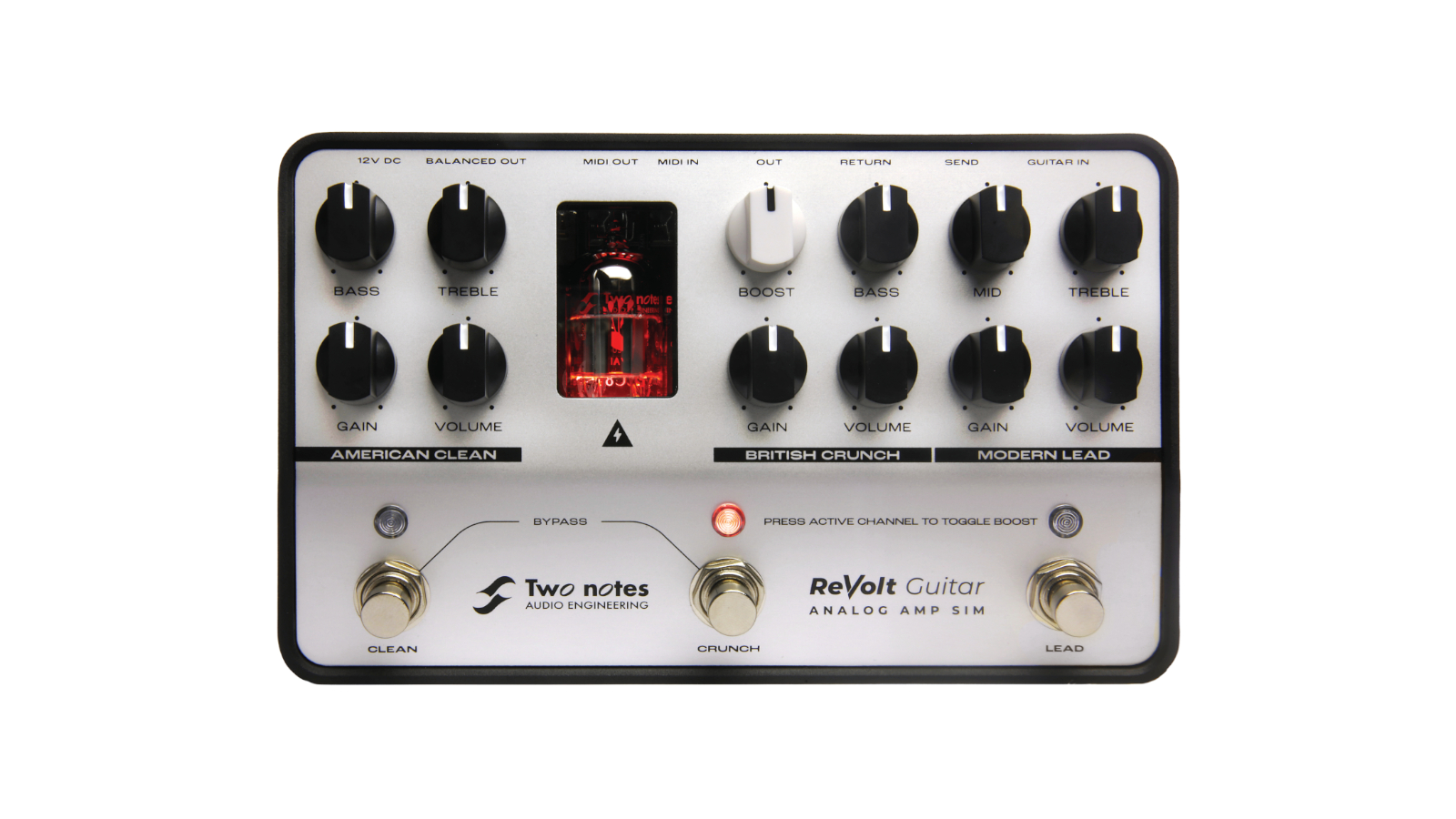GuitarPlayer Verdict
Impressive sparkle and clarity, and a good sense of realism when compared to similar tones from traditional tube amps or more expensive digital modelers
Pros
- +
Compact and well-built three-channel rig alternative
- +
Impressively good sounds
Cons
- -
None
You can trust Guitar Player.
Two Notes has made a good name for itself mainly by designing and manufacturing digital impulse response (IR) speaker and cab simulators. So the release of an analog unit like the ReVolt Analog Amp Sim might seem like a big leap sideways – or even backward.
Looked at it another way, however, it’s a clever diversification in the field – a hedging of bets, not to mention a credible attempt for serious viability in the growing market for fly rigs, and at a reasonable price to boot.
Two Notes calls the unit a “three-channel all-analog guitar amp simulator with an analog cab sim, FX loop and MIDI,” and that goes some way toward explaining what’s on offer.
The three channels include American Clean, with controls for gain, volume, bass and treble; and British Crunch and Modern Lead, each with their own gain and volume and shared bass, middle and treble. The boost knob can add gain to any channel with a second press of the respective foot switch.
- Our of the best pedal amps
Only one cab sim is included, but the analog emulation of a Marshall Slash Signature 4x12 is likely to be as broadly popular as any single cab might be, especially with the crunch and lead channels’ leanings toward higher-octane modern rock.
In addition to 12 controls and three foot switches on its top face, the unit has mini toggle switches on its front panel for Cab Sim on/off and 4-Cable on/off (to enable that popular routing method in a guitar amp’s FX loop), along with aux in and headphones out on 1 /8-inch jacks.
The back panel carries an input, send and return jacks for the FX loop, and an output, all on ¼-inch jacks; MIDI in and out on 1 /8-inch TRS jacks (one TRS-to-DIN adaptor is included); a balanced XLR out with ground-lift switch, and an input jack for the included 12-volt DC power supply.
One of Two Notes’ selling points for the ReVolt is its inclusion of a ECC83 (12AX7) preamp tube, which runs at a full 200 volts DC on the plates, akin to the preamp stage in a traditional tube amp. Such tubes included only two gain stages, so as used here the tube-driven preamp stages within the circuit are applied to all three channels, which also include their own respective tone and gain-shaping circuitry of other sorts.
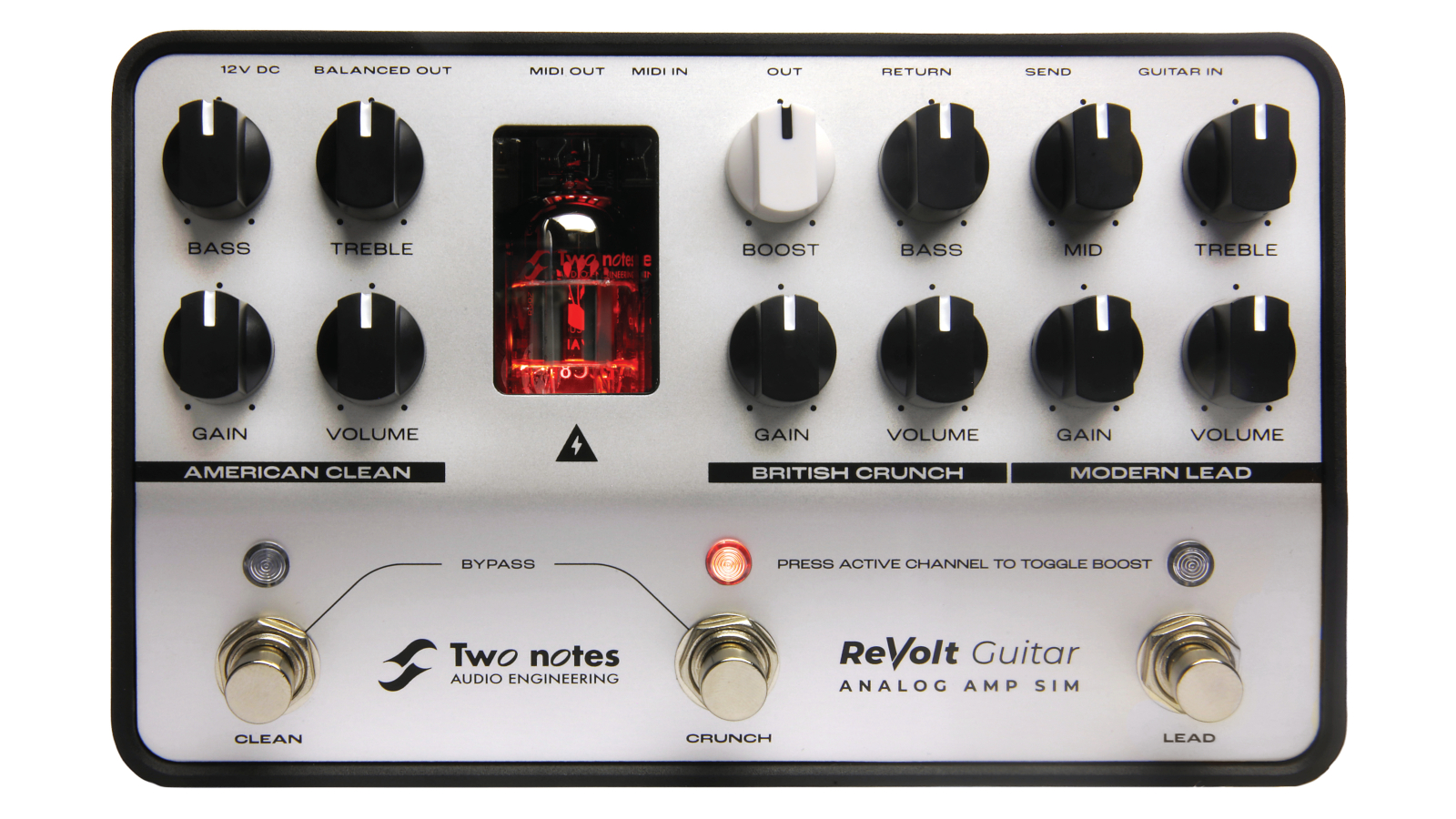
The construction appears rugged, and the design is clean, efficient and mostly very intuitive. There’s no provision for recalling presets, but that’s not the intention. The amp-like channels deliver a WYSIWYG interface in which real knobs affect real changes in the essential settings, so the thing is really very simple to use.
With a real tube front end, the ReVolt also promises good interaction with traditional overdrive pedals placed before its input, as well as merging seamlessly with delay, modulation and reverb applied in the loop.
Purchase of a ReVolt includes a lifetime license to the Two Notes Torpedo Wall of Sound plug-in, allowing detailed editing of speaker, cab, mic and power-amp sims in your DAW, plus a free DynIR Cabinet Collection 10-cab pack.
I tested the ReVolt with a Fender Jazzmaster and a Gibson Les Paul, into headphones, Mackie HR824 studio monitors and a Tech 21 Power Engine Deuce Deluxe with the cab sim engaged, as well as into both the front end and the FX loop of a Friedman Small Box head and 2x12 cab with cab sim off.
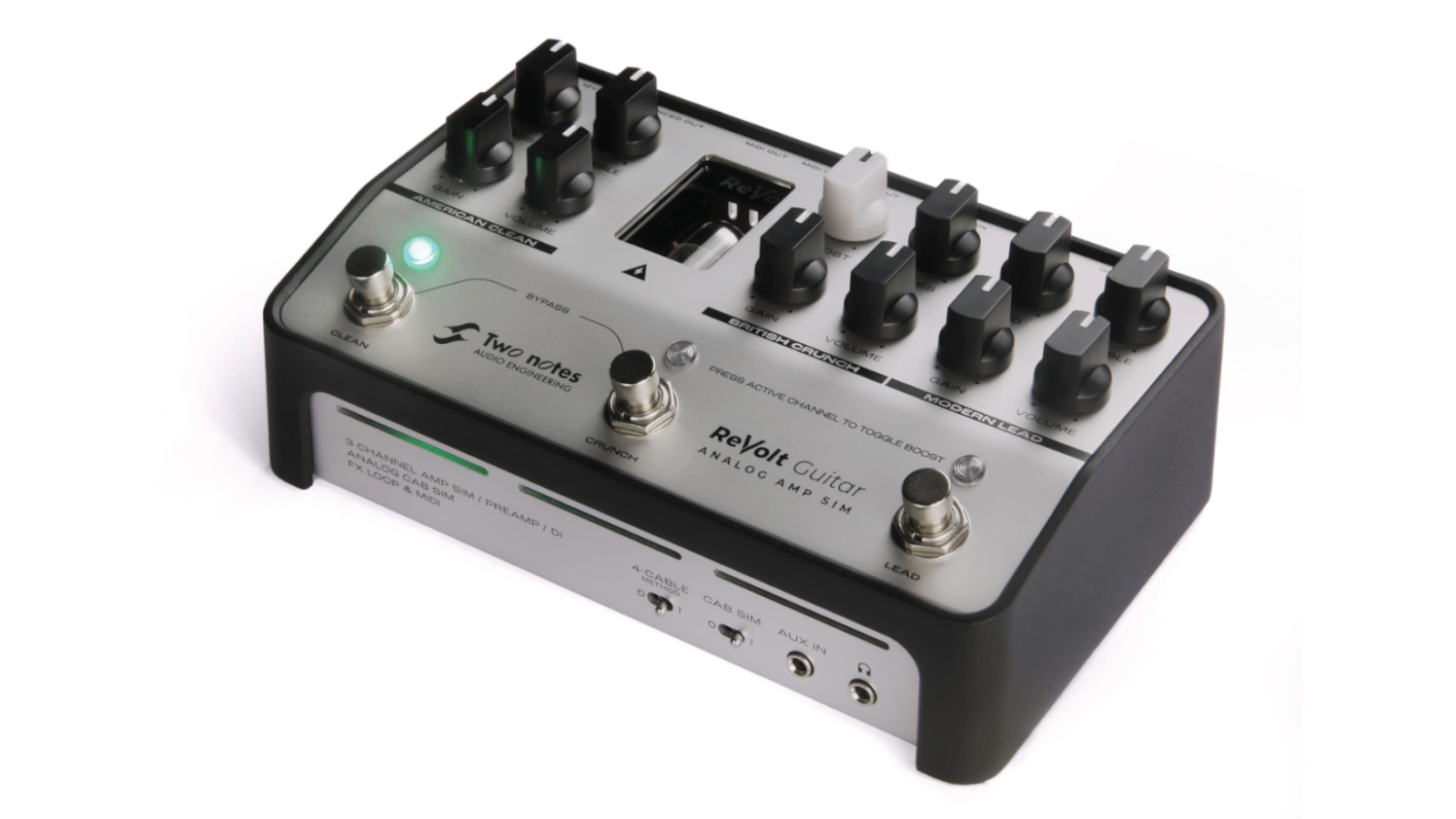
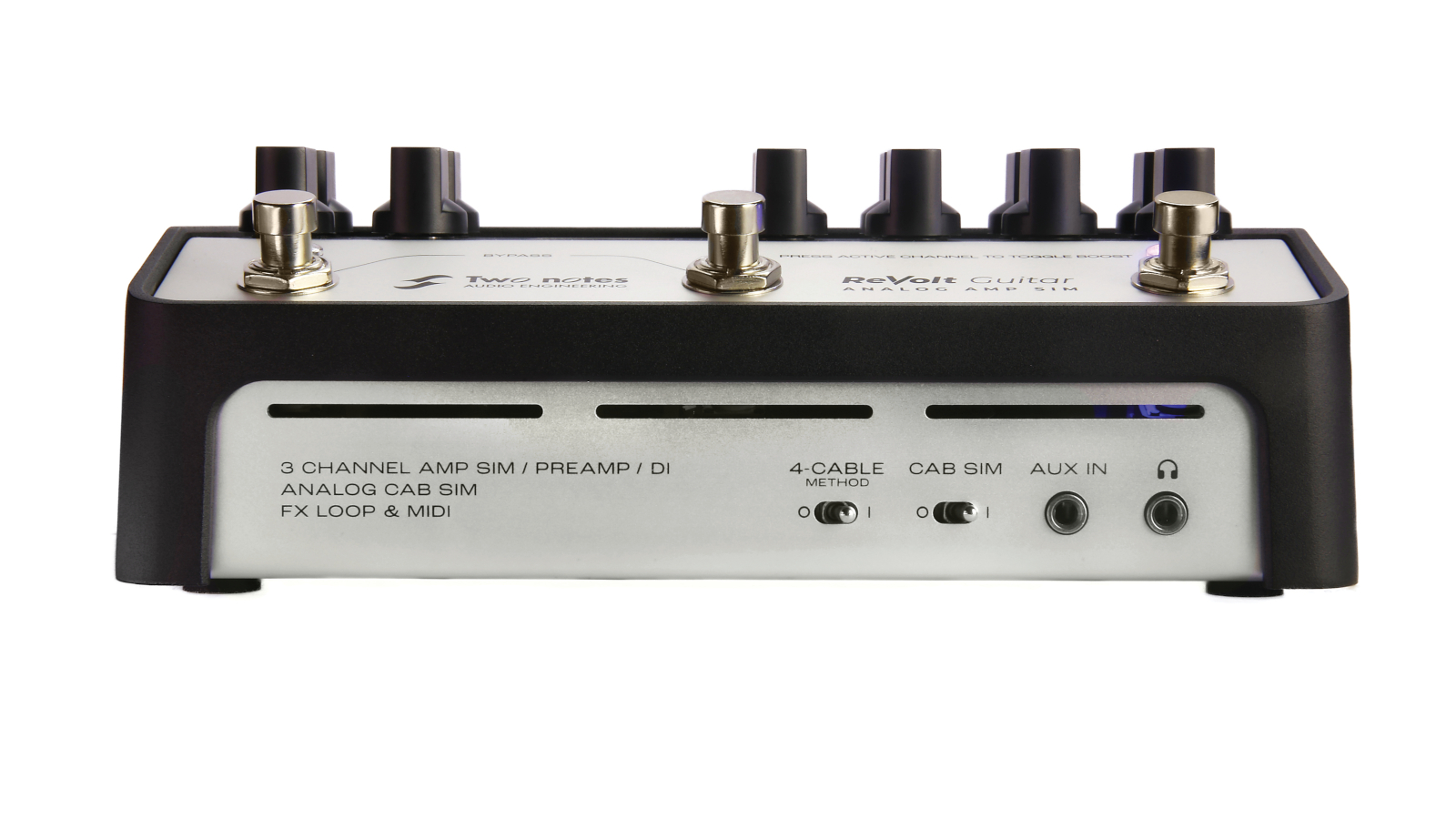
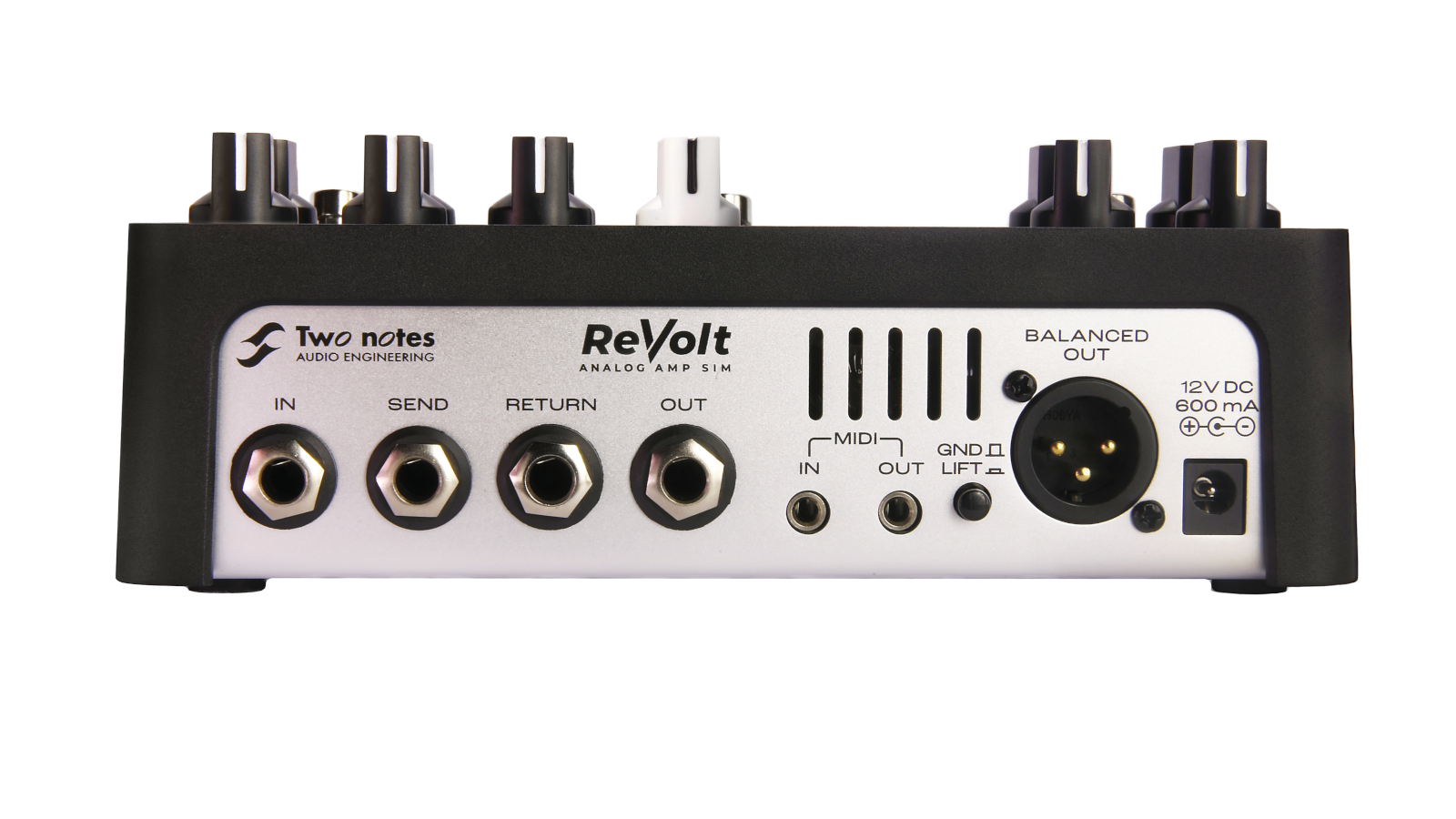
Preamp pedals of this ilk often necessitate compromises between varying applications. For example, they may sound glorious cranked up in lead mode when DI’d into your recording interface but get buzzy and ragged at the same settings when plugged into an amp. However, I found the ReVolt delivered well-pitched renditions of all three channels into everything I tried it with, never coughing out something I couldn’t turn to myself in a pinch at a gig or in the studio.
With that said, I think the ReVolt does its thing most convincingly as a stand-alone for either home-studio or live into FoH use, where the channels’ voicings and the analog 4x12 cab sim yielded an “in the mix” sound that I found enjoyably convincing in context.
I think the ReVolt does its thing most convincingly as a stand-alone for either home-studio or live into FoH use
While you can turn most preamps’ crunch and lead channels into a fun ride with enough gain and volume – and those settings certainly do the trick here – I was surprised at how much I enjoyed the ReVolt's American Clean channel. It’s surprisingly good and convincingly amp-like with the gain advanced up to noon or a little beyond to add a touch of grit and texture.
It’s even better with the boost activated, which takes it into pushed-clean territory – more this side of the edge-of-breakup sound than driven past it. And it is certainly rather American voiced, as intended, but dialed right I also got some Vox-y jangle out of it. And all of this with impressive sparkle and clarity, and a good sense of realism when compared to similar tones from traditional tube amps or more expensive digital amp modelers.
Overall, the ReVolt’s functionality benefits from its simplicity, and its sound is certainly good enough to tempt players in the market for compact alternative rig solutions.
Specifications
- CONTROLS: American Clean: gain, volume, bass, treble. British Crunch and Modern Lead: shared bass, middle, treble and individual gain and volume. Shared boost level, three individual dual-function foot-switches (one for each channel, double-click for boost). Cab sim on/off, four-cable method on/off. I/O Guitar input, FX send and return, output, MIDI in and out, balanced XLR output with ground-lift switch, aux in, headphone out
- POWER: 12V DC at 600mA, power supply included
- SIZE: 7.6” x 4.6” x 2.8” (LxDxH)
- WEIGHT: 2 lbs (approx)
- BUILT: China
Visit Two Notes for more information.
Dave Hunter is a writer and consulting editor for Guitar Player magazine. His prolific output as author includes Fender 75 Years, The Guitar Amp Handbook, The British Amp Invasion, Ultimate Star Guitars, Guitar Effects Pedals, The Guitar Pickup Handbook, The Fender Telecaster and several other titles. Hunter is a former editor of The Guitar Magazine (UK), and a contributor to Vintage Guitar, Premier Guitar, The Connoisseur and other publications. A contributing essayist to the United States Library of Congress National Recording Preservation Board’s Permanent Archive, he lives in Kittery, ME, with his wife and their two children and fronts the bands A Different Engine and The Stereo Field.
A gigantic $360 off Positive Grid's celebrated BIAS amp sim software may have just put the nail in the coffin of my beloved valve combo
"Let’s take acoustic-electric amplification to its ultimate realization." How to make an acoustic amp shimmer like a vintage Fender, smolder like a Dumble or scream like a Marshall
